A collection of notes, butchered quotes, and learned things from Climate Day at Expo West. This year, I decided to do something different and include my random noted and points of inspiration picked up from the many speakers. Too many times I took notes that didn’t go anywhere, so this is my attempt at sharing some of my absorption of knowledge.
Names are listed under photos, from left to right, with things garnered from each speaker. If I didn’t write something under a name, I was probably completely absorbed in what they had to say and forgot to take notes.
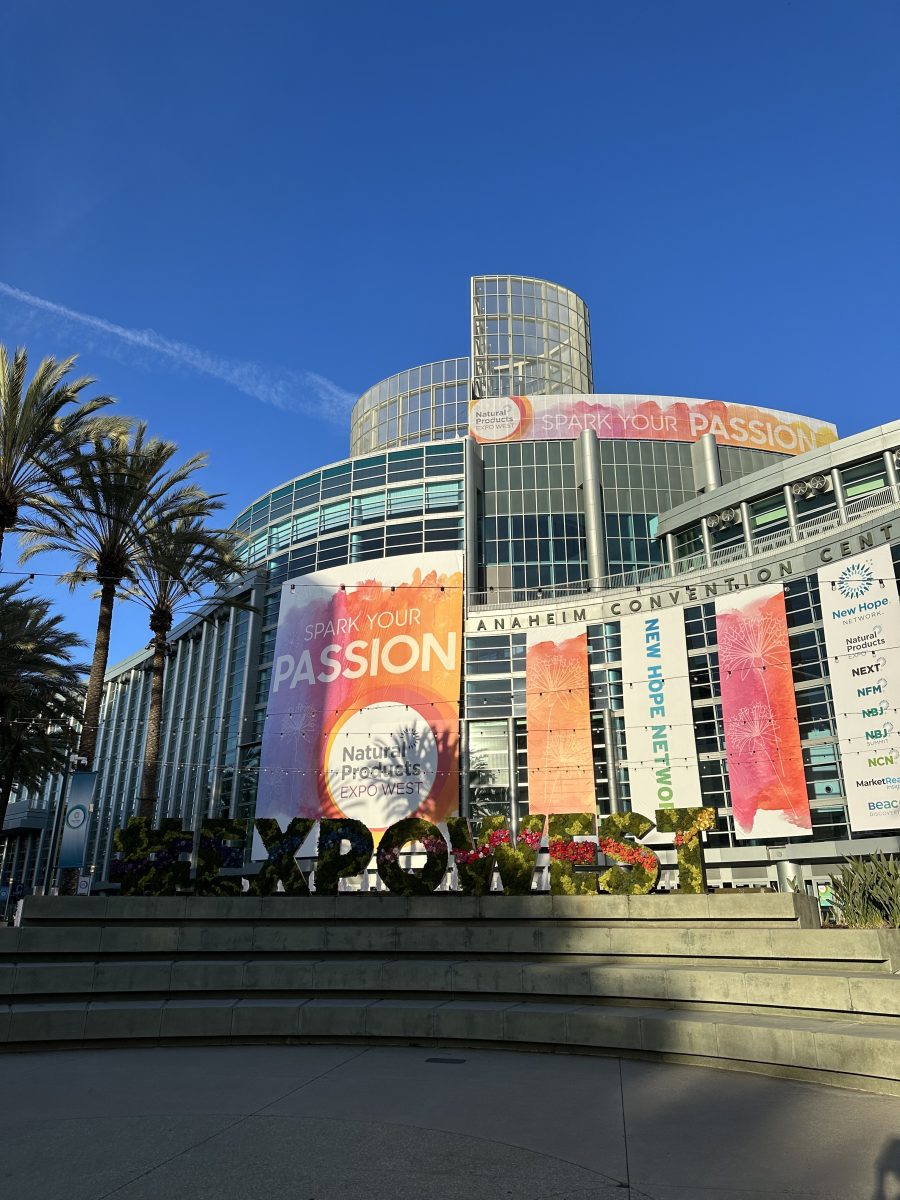
Table of Contents
Climate & Coffee
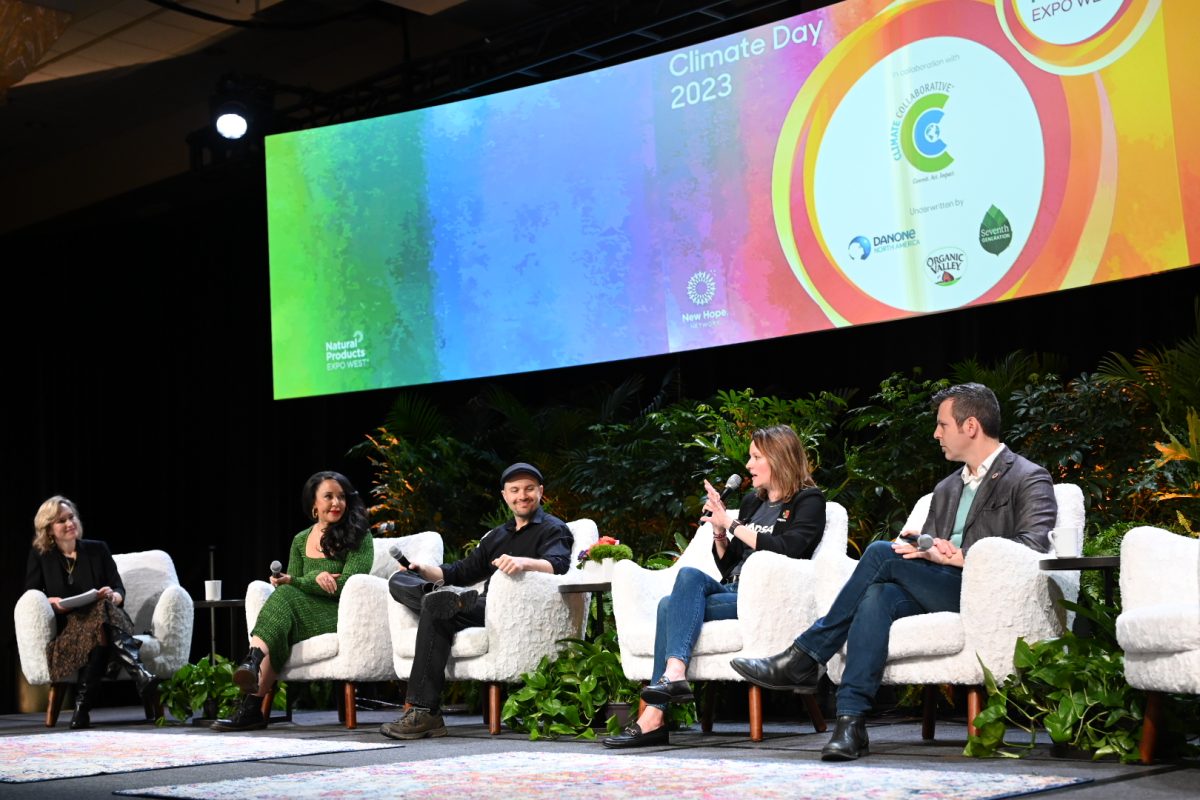
Greenwashing
Greenwashing is the practice of companies making misleading or false claims about the environmental benefits of their products or services. This can involve exaggerating the positive impact of a product, using unclear or unverifiable claims, or minimizing or hiding negative environmental impacts.
Greenwashing is a significant issue because it can deceive consumers into believing that a product is eco-friendly when it is not. This can lead to consumer decisions that do not align with their values or priorities, as well as the perpetuation of unsustainable practices.
Greenwashing can also create unfair competition between companies that are genuinely committed to sustainability, as those engaging in greenwashing may gain an undeserved advantage by making false or exaggerated claims.
To combat greenwashing, consumers need to be informed and critical when assessing environmental claims. They should look for specific and verifiable environmental claims, such as third-party certifications or assessments, instead of vague or general claims that cannot be easily verified.
Companies can also help to prevent greenwashing by being transparent and truthful about their environmental performance, and by providing clear and accurate information to consumers about the environmental impact of their products or services.
In summary, greenwashing is a deceptive marketing practice that can mislead consumers and undermine sustainability efforts.
To avoid being misled, consumers should be knowledgeable and discerning when evaluating environmental claims, while companies should be transparent and honest about their environmental performance and impact.
Courtney Pineau, Climate Collaborative
Julia Collins, Planet FWD/Moonshot
I have to be the Chief Executive Optimist, that is the job.
Ethan Soloviev, HowGood
Heather K. Terry, GoodSam Foods
Greenwashing stops when humility and vulnerability is embraced.
If your company is not thinking about climate change, regenerative agriculture, you are already behind and will fail in 20 to 30 years.
Everything from who plants the seed all the way to the consumer has to be considered.
Errol Schweizer, Errol Schweizer LLC
Back it up with data, granular details.
Identifying and Eliminating Deforestation in Your Supply Chain
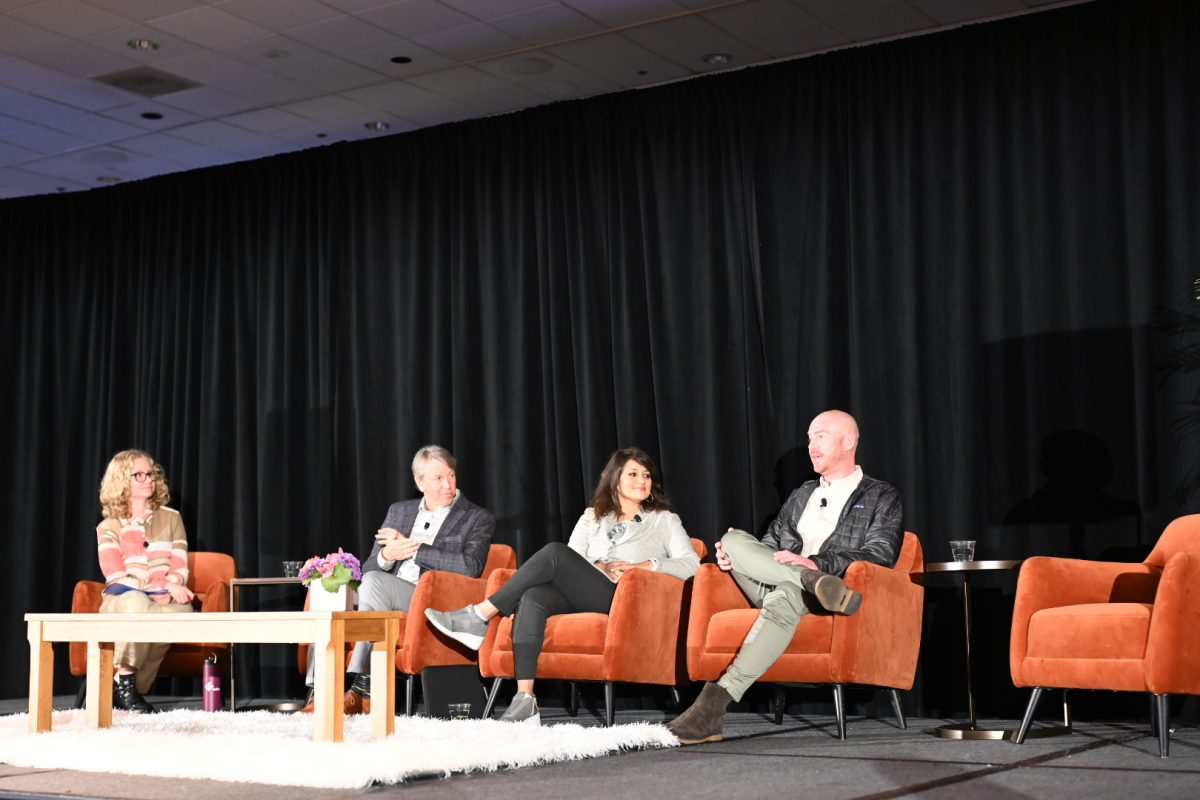
Eliminating deforestation in the supply chain is crucial for several reasons. First and foremost, deforestation contributes significantly to climate change by releasing large amounts of carbon dioxide into the atmosphere. Trees absorb carbon dioxide and help to mitigate the impacts of climate change, so their removal can have a significant impact on the environment.
In addition to its impact on climate change, deforestation also has significant consequences for biodiversity. Forests are home to a vast array of plant and animal species, and their destruction can lead to the extinction of many of these species. This loss of biodiversity can have ripple effects throughout the ecosystem, impacting everything from soil health to water quality.
Finally, deforestation can have negative social and economic impacts, particularly for indigenous communities who rely on forests for their livelihoods. When forests are destroyed, these communities can lose access to the resources they need to support themselves, leading to poverty and economic instability.
Eliminating deforestation in the supply chain is therefore an important step towards creating a more sustainable and resilient food system. By sourcing products from suppliers who prioritize sustainable land use practices, companies can help to reduce the environmental and social impacts of their operations while also promoting sustainable economic growth.
Fair Wild Certification
The FairWild certification is a globally recognized standard that aims to promote sustainable and ethical wild collection of plants and fungi. Developed in partnership with industry, conservation groups, and local communities, the certification is intended to ensure that wild resources are harvested in a manner that is environmentally sustainable and socially responsible.
The certification covers a wide range of products that are obtained from the wild, including medicinal and aromatic plants, mushrooms, wild berries, and spices. To achieve certification, companies must meet a set of rigorous criteria related to sustainability, social responsibility, and fair trade practices.
These criteria include the use of sustainable harvesting practices that protect the environment and wild populations, fair compensation and safe working conditions for collectors, and respect for the rights and cultures of local communities.
One of the key benefits of the FairWild certification is its ability to promote the sustainable use of wild resources. By ensuring that collectors use sustainable harvesting practices and do not damage the environment or deplete wild populations, the certification helps to preserve biodiversity and maintain healthy ecosystems.
The certification also promotes social responsibility by ensuring that collectors are paid fairly and have access to social benefits such as education and healthcare.
In addition to its environmental and social benefits, the FairWild certification provides consumers with a transparent and traceable supply chain. Companies that achieve certification must be able to trace the origins of their products and provide clear information about their sourcing practices.
This allows consumers to make informed choices about the products they purchase and encourages companies to adopt more sustainable and responsible practices.
Overall, the FairWild certification is an important tool for promoting sustainability, social responsibility, and transparency in the wild collection industry. By ensuring that wild resources are harvested in a manner that is both environmentally sustainable and socially responsible, the certification supports the conservation of biodiversity and the economic well-being of local communities.
The Nature Positive Framework
The Nature Positive framework is a sustainability approach that seeks to protect and enhance nature while promoting economic growth and social well-being. Developed by the World Wide Fund for Nature (WWF), the framework acknowledges the critical importance of a healthy natural environment for human well-being.
The framework emphasizes the need to go beyond merely reducing negative environmental impacts to actively improve the health and resilience of natural systems. Its key principles include conservation, regeneration, circular economy, sustainable production and consumption, and human well-being.
Conservation is critical to maintaining biodiversity and ensuring the resilience of natural ecosystems. Regeneration focuses on the restoration of healthy and resilient ecosystems, such as through regenerative agriculture and sustainable fisheries.
A circular economy promotes the efficient use of resources and the reduction of waste to minimize negative impacts on the environment while creating economic opportunities. Sustainable production and consumption patterns also help to reduce negative environmental impacts and promote social and economic well-being. Finally, human well-being is recognized as being dependent on a healthy and functioning natural environment.
The Nature Positive framework provides a roadmap for promoting sustainable development that recognizes the interdependence of nature and human well-being. It encourages collaboration between stakeholders to protect and enhance nature while also promoting economic growth and social well-being.
By adopting this approach, companies, governments, and other stakeholders can work together to create a more sustainable and equitable future.
Carbon Measurement
Carbon measurement is the process of quantifying the amount of carbon dioxide (CO2) and other greenhouse gases (GHGs) emitted by an organization, product, or activity. Carbon measurement is essential for understanding and managing the environmental impact of human activities on the planet, particularly in relation to climate change.
Carbon measurement involves collecting data on the amount of GHG emissions generated by an organization or activity. This data is typically collected using standardized methodologies, such as the Greenhouse Gas Protocol, which provides guidelines for measuring and reporting GHG emissions.
The data can then be used to calculate the carbon footprint of an organization, which represents the total amount of GHG emissions associated with its operations.
Carbon measurement is important for several reasons. First, it allows organizations to understand their environmental impact and identify areas where they can reduce their carbon footprint. This can include improving energy efficiency, using renewable energy sources, or reducing waste.
Second, carbon measurement can help organizations comply with regulatory requirements related to GHG emissions. For example, many countries and regions have established carbon pricing mechanisms or emissions trading systems that require companies to report their emissions.
Finally, carbon measurement can help companies to demonstrate their commitment to sustainability and to communicate their environmental performance to stakeholders, such as customers, investors, and employees.
In summary, carbon measurement is a critical tool for managing the environmental impact of human activities. By collecting data on GHG emissions and calculating their carbon footprint, organizations can identify opportunities for improvement, comply with regulatory requirements, and communicate their environmental performance to stakeholders.
Caitlin Oleson, Climate Collaborative
Tim Greiner, Pure Strategies
Deforestation is the second leading cause of climate change.
Deforestation is responsible for land-use change.
Nature positive framework rebuilds and reverses a decline. Enhances biodiversity, protects and restores land. Involves 3 main strategies.
- Identify deforestation in supply chain and eliminate
- Reduce land footprint
- Engage in practices that restore and enhance land, such as regenerative agriculture.
Prioritization is key.
10 commodities tied to deforestation
- soy
- beef
- cocoa
- coffee
- palm
- rubber
- wheat
- sorgum
- sugar
30 more commodities on a b list in addition to these which can be more regional.
- onions
- grapes
- beans
- and so on…
Supplies don’t respond because they don’t want to tell the buyer/company that they don’t know or don’t have the ability.
Worked with Timberland on a project for leather and started sourcing grass fed leather – also look into Other Half. Note to self – reach out to Piedmontese of Nebraska.
We need to think differently about where and how we use land.
An important place to start is for businesses to do land foot printing.
Cheryl Pinto, Ben & Jerrys
Looking at the lives of cocoa farmers and illegal deforestation. Farmers feel compelled to clear land and plant cocoa.
Tall standing trees and old growth is being cut down; social inclusivity.
Leaning in heavily with regenerative ag for dairy sourcing.
Evaluating the social livelihood pieces and biodiversity targets in order to better drive impact.
Challenges to traceability:
Can’t track if cacao came from an area that was illegal or came from an area fully mapped with polygons.
Traceability needs to become more of a norm and challenges will begin to flip.
There is an ignorance of assuming everything is fine.
The consumer thinks that companies know what’s going on.
Look for other companies or brands that can compliment your own movement and share supply chain efficiencies.
Taylor Clayton, Traditional Medicinals
Fair Wild Certifications. Secure the long term viability of ecosystems.
Botanical herbal ingredients and nature impacts.
Business for Nature has lots of resources and guidance.
86 herbs are sourced, foot printing the herbs used most.
Carbon measurement: a lot of uncertainty on if its being done right or the right way to measure. Recognize that carbon measurement and biodiversity measurements can happen concurrently.
Provides a foundation and a way for farmers to set themselves apart to companies looking to use them as a supplier.
Precompetitive collaboration is essential, if not critical, as many companies will use the same suppliers. Companies want to accomplish the same goals, but may not have the budget to do so.
How do we take degraded lands back, restore the land, and make them profitable. Money could be made from nature positive outcomes or carbon sequestration.
Empower the land to create goods and livelihoods.
The Almond Project: Building Regenerative Supply Through Collaboration
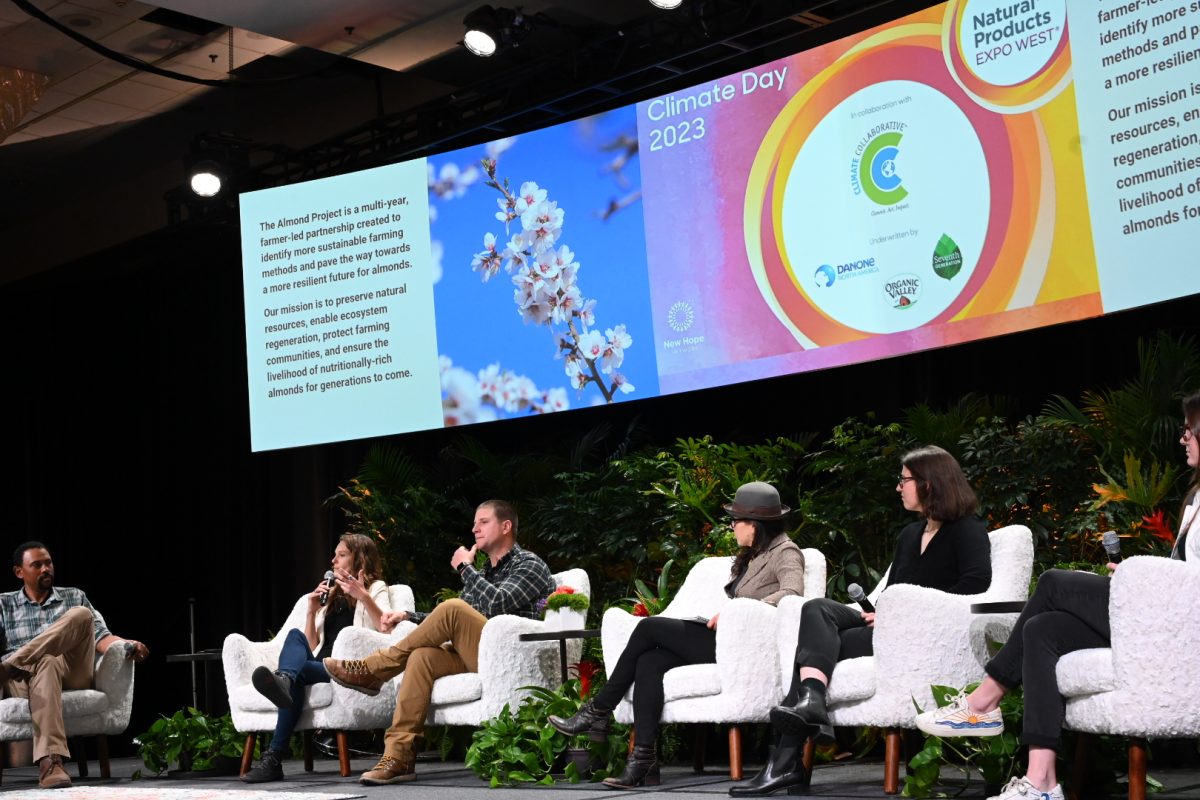
The Almond Project
The Almond Project is an initiative launched by the Sustainable Food Lab to promote sustainable and socially responsible almond production in California, the world’s largest almond-growing region. The project focuses on addressing the environmental and social challenges associated with almond production.
One of the primary challenges is the high water consumption required for almond production, which can put significant pressure on local water resources. To address this issue, the Almond Project promotes the adoption of sustainable water use practices, such as water recycling, soil moisture monitoring, and irrigation scheduling.
Another challenge is the use of pesticides and other agrochemicals, which can have negative impacts on human health and the environment. The project encourages the use of integrated pest management (IPM) practices, which prioritize non-chemical approaches to pest control and minimize the use of pesticides.
Additionally, the Almond Project aims to promote fair labor practices and working conditions for almond farmers and workers. It encourages the adoption of fair labor standards, such as the Fair Trade USA certification, which provides social and economic benefits to almond farmers and workers.
The Almond Project is a comprehensive initiative that seeks to promote sustainability and social responsibility in almond production in California. By addressing environmental and social challenges, the project aims to create a more resilient and equitable almond industry that benefits both the environment and the communities that depend on it.
The Different Parts of an Almond
Almonds are a versatile crop with a wide range of uses beyond simply eating the nut itself. Each part of the almond has unique characteristics that make it valuable for a variety of applications.
The almond kernel is the most commonly recognized part of the almond and is consumed in a variety of forms, such as raw or roasted almonds, almond butter, and almond milk. Almonds are also commonly used in baked goods, confectionery products, and other food products.
The almond hull, which is the outer shell that encases the kernel, is often used as a feed source for livestock or as a natural fertilizer for crops. The hull is rich in nutrients such as nitrogen and carbon, and can be composted to improve soil health.
The almond shell, which is the hard outer layer that surrounds the hull, is a valuable source of biomass. The shell can be burned to generate heat and electricity or processed into activated carbon, which is used in water treatment and air purification.
Almond trees themselves also have value beyond their nut production. The wood from almond trees is often used for furniture, flooring, and other woodworking applications. The trees also provide important ecosystem services, such as carbon sequestration and soil conservation.
Each part of the almond has unique characteristics that make it valuable for a variety of applications. The kernel is the most commonly consumed part of the almond, but the hull, shell, and tree itself also have important uses. The versatility of the almond crop makes it an important and valuable commodity in many different industries.
Jesse Smith, White Buffalo Land Trust
Take bite sized chunks out of monumental tasks.
Demonstrating success offers the opportunity to transform so many other products.
Being out in the orchards and data capturing – what doesn’t get captured is the visceral sounds and smells, from compost to sheep grazing. See everything alive, from birds and bees, the humming of liveliness. Data science researches were the first to comment on what box that goes on, how to measure an ecological health index score, the emotional response of a living, intact ecosystem.
Lauren Tucker, Beyond the Farm / Almond Project
Its important to have brands fund scientific research and technical assistance to farms.
There is risk in making changes and having brand support helps almond growers make these changes.
Your view changes real fast when you stop judging and start listening. Its easy to talk sustainability in a boardroom, but really different when you’re standing in a field with someone who is getting so creative to bring a product to market consistently in between weather, commodity pricing, standards and all the insane things we ask farms to do.
Joe Gardiner, Treehouse California Almonds
3rd generation family farm in Kern County.
Co-benefits beyond carbon sequestration – visual impacts like better water infiltration. There’s more than the kernel we eat – there’s also an outer hull, that goes to livestock feeding, and a shell which can go towards biofuel, and trees, growing and sequestration of carbon.
There’s nothing that inspires change like success.
1997 was the first microdrip irrigation systems on his farm.
If we can prove it on the farm side, growers will look at what his farm is doing and adapt their own farms.
The essence of this project is not just almonds, it can evolve into so many other crops.
For decades, farmers have been terrible storytellers. From the farm side, we should be proud in what we do and we should share it and talk about it. There are a lot of good things we’ve been doing for a long time.
Stacey Marcellus, Cappello’s
When you just put a little effort out there, its pretty amazing the effort that comes through and can be unexpected.
The thought of a regenerative ag supply system felt very transactional before. Felt empty and unattainable. Being involved with the Almond Project and collaborating with other brands and growing, having a shared goal, has opened up a lot more potential and ability to be part of the process.
At the most basic level, getting a baseline education on where things are today is super critical in order to evoke curiosity in people and in ourselves, so we aren’t just working from the place that everything is a problem, but to also bring something new into existence.
Rebecca Gildiner, Daily Harvest
Address what the risk is for growers for organic growers and getting there.
Organic is the start of the regenerative journey.
There are limits to certifications, and this project is not focused on a certification. It focuses on impact.
They are not an organic certified brand because they work with a lot of organic-transition companies and struggle to explain that to customers.
We’re working in a commoditized industry and we don’t have to. We don’t have to accept that.
We all feel an urgency, a fire, but this is a 5 year project. And it might take 6, or it might take 1.
Berklee Welsh, Simple Mills
We believe there is a way to grow almonds differently, in a way that respects the planet.
Reimagine what an orchard that honors the health of the people and ecosystem looks like.
Measuring an ecosystem is not linear; it requires a holistic view.
What has shifted beyond carbon is we have an opportunity to not just share data with partners, but have become much more deeply invested in the community and where food comes from.
A lot of people think projects like this are altruistic, but as a food company we realize the continuation of our business is dependent on this.
Climate Day Keynote
Kim Stanley Robinson, Hachette Books
The 30×30 Movement
The 30×30 movement is a global initiative that aims to protect a minimum of 30% of the world’s land and oceans by 2030. The movement recognizes the severe threats that human activities pose to the natural systems that sustain life on Earth, including climate change, deforestation, and overfishing.
The 30×30 movement has garnered widespread support from governments, non-governmental organizations, and other stakeholders who share a commitment to safeguarding biodiversity and ecosystems for the long-term health and sustainability of the planet.
The initiative seeks to establish protected areas, such as national parks and marine reserves, that prioritize conservation and sustainable use.
The 30×30 movement is guided by several goals. First, it seeks to protect biodiversity by establishing protected areas that support a diverse range of species and ecosystems.
Second, it aims to promote the sustainable use of natural resources, such as fisheries and timber, by establishing protected areas that are managed for sustainability.
Third, it seeks to mitigate and adapt to the impacts of climate change by protecting and restoring natural ecosystems, which can sequester carbon and help to mitigate the impacts of climate change.
The 30×30 movement has gained significant momentum in recent years, with many countries and organizations committing to the goal of protecting at least 30% of the planet’s land and oceans by 2030.
The initiative is viewed as a critical step towards creating a more sustainable and equitable future that recognizes the vital importance of protecting the planet’s natural systems.
The Climate Action in an Uncertain Economy
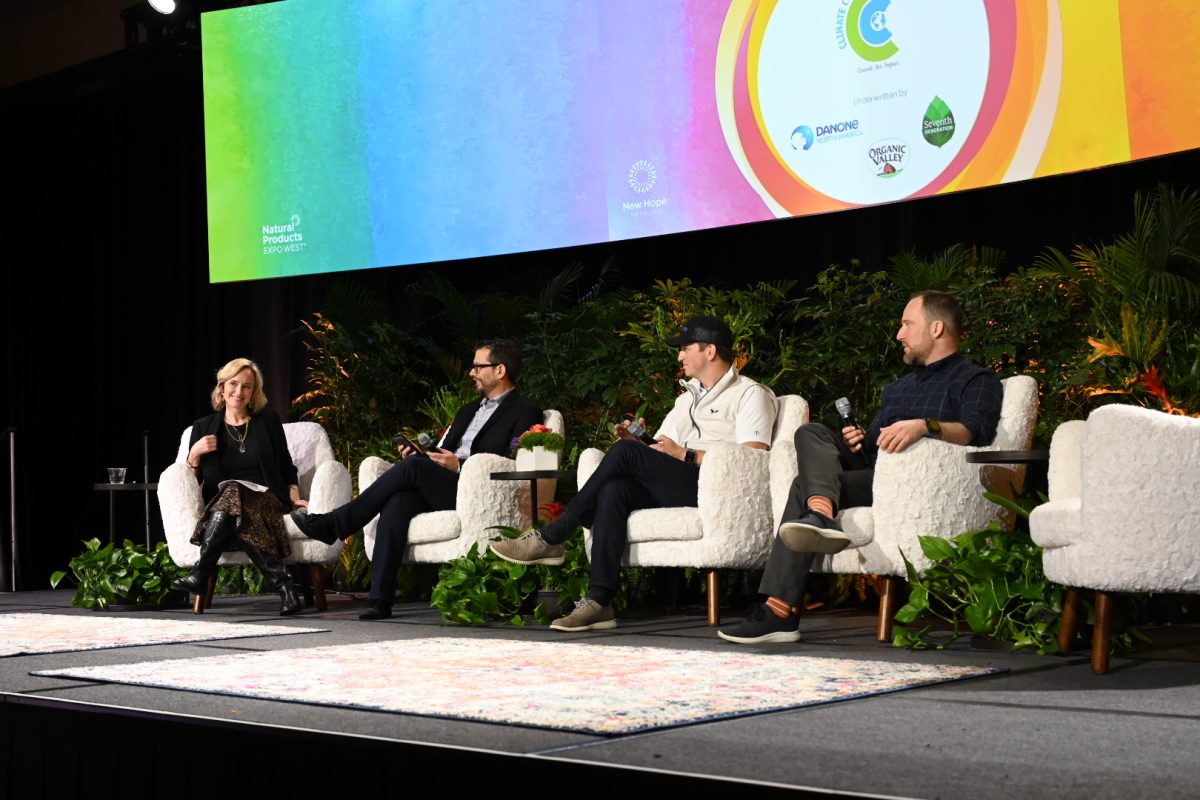
Courtney Pineau, Climate Collaborative
Companies who have made regenerative commitments have made progress in that area.
Eric Pierce, New Hope Network
The long term trend is towards sustainability and transparency. Stay the course and remain engaged. Consider if you have the right expectations. Consider reframing what those might be.
Loyalty, retention, repeat purchases.
64% natural product shoppers prefer sustainable products. 38% for everyone.
14% of total consumers tried a new product in the last 12 months because it was sustainable.
Share stories truthfully and with integrity.
Engage with consumers with the assumption they don’t understand regenerative agriculture or sustainability. Use your label as an entry point for education.
Remember and think about how you build trust.
Andrew Criezis, NielsenIQ
Climate change is like a flywheel. The faster it changes the faster the effects are.
Top sustainability claims:
- Animal welfare
- Environmental sustainability
- Social responsibility
- Sustainable packaging
Sustainability means different people to different consumers.
Paul Guidice, CoMetrics
We are starting to see deflation at the manufacturing level.
The Climate Impact
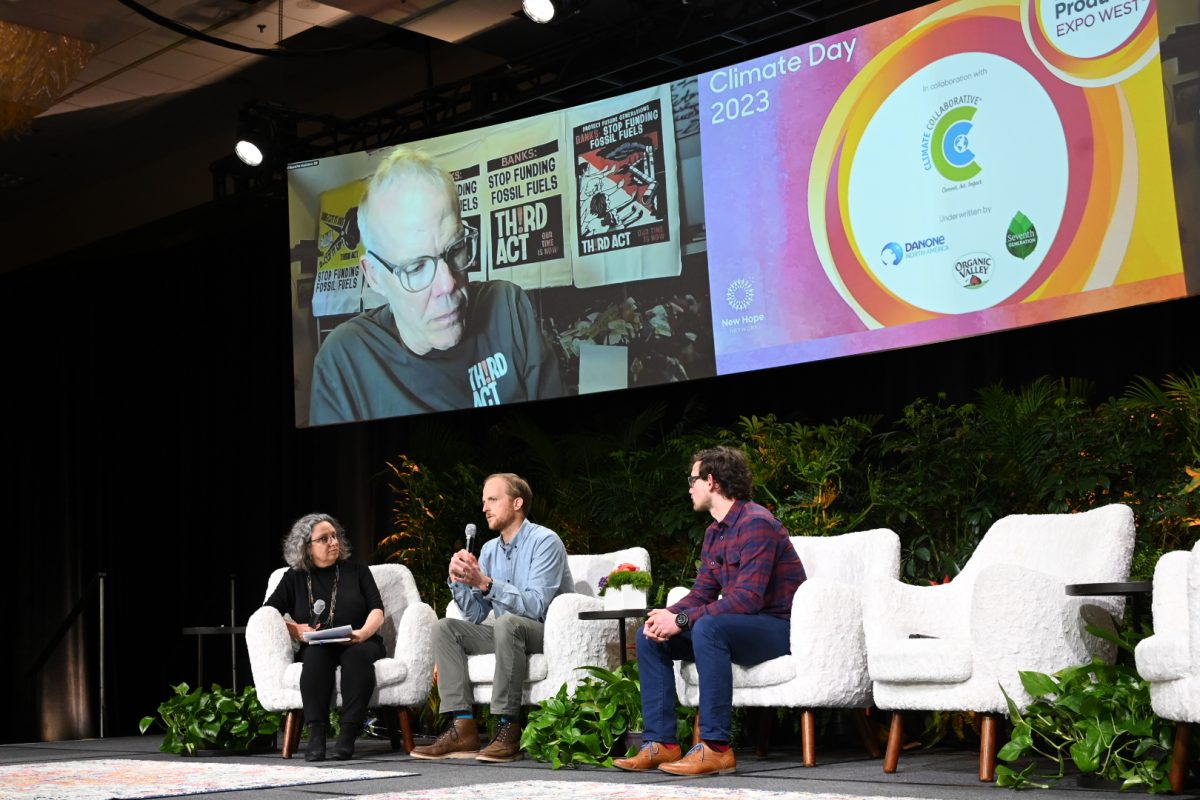
Nancy Hirshberg, Hirshberg Strategy
Bill McKibben, Third Act
[virtual]
You’re all going to heaven anyway, so let’s put some pressure on the system.
Charlie Bichoff, Patagonia
Paul Moinester, Outdoor Policy Outfit
Companies really didn’t think or know to think about their financial supply chain climate neutral activities or climate impact.
Engage with banks to help them understand what their environmental impacts are.
- Climate goals
- Use of client funds
- Reporting and transparency
- Climate risk management
Not one of the top 10 banks have reported their climate emissions.
Radical Imagination
Leah Thomas, Intersectional Environmentalist
One Step Closer Zero Waste
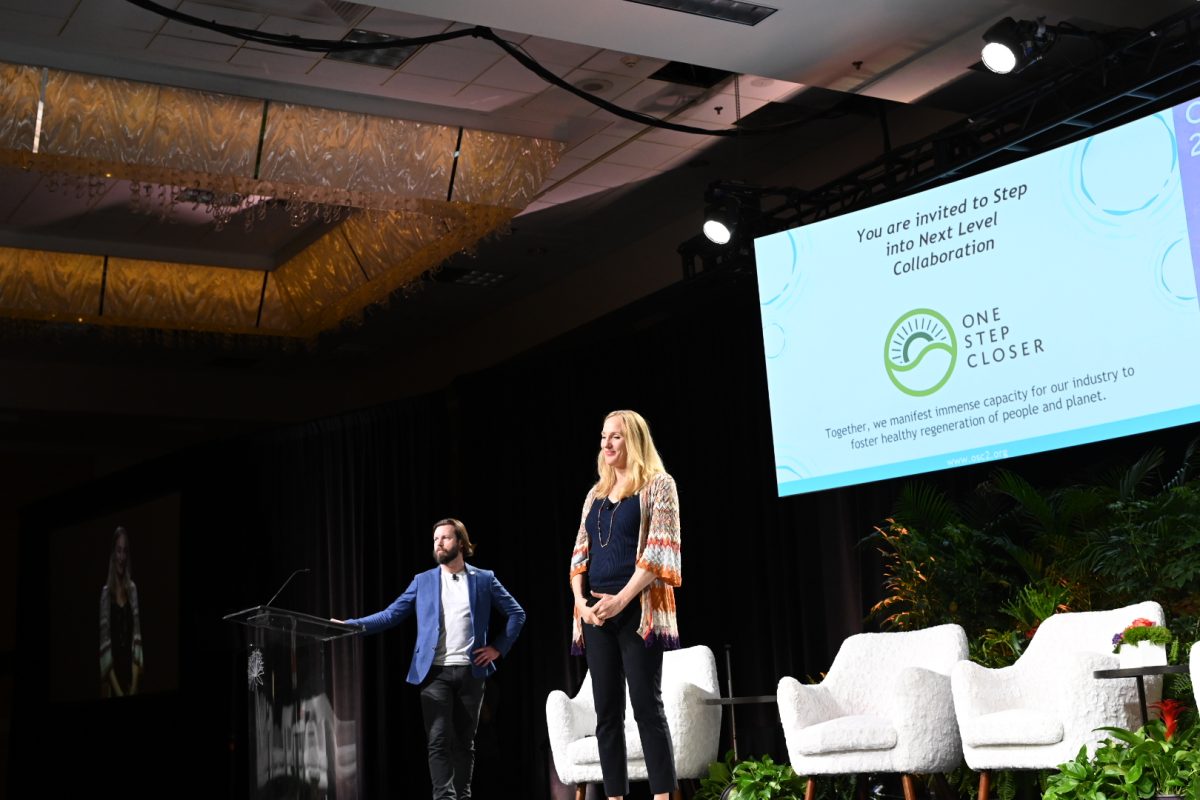
Jake Herbert, OSC
Laura Dickinson, OSC
What does working together really mean and are we working together?
Lightning Round
Elysa Hammond, Clif Bar
Danielle Gould, Food+Tech Connect
Philip Taylor, Mad Agriculture
Bri Warner, Atlantic Sea Farms
Claire Schlemme, Renewal Mill
Jyoti Stephens, Nature’s Path
Increasing Consumer Adoption of Plant-Based
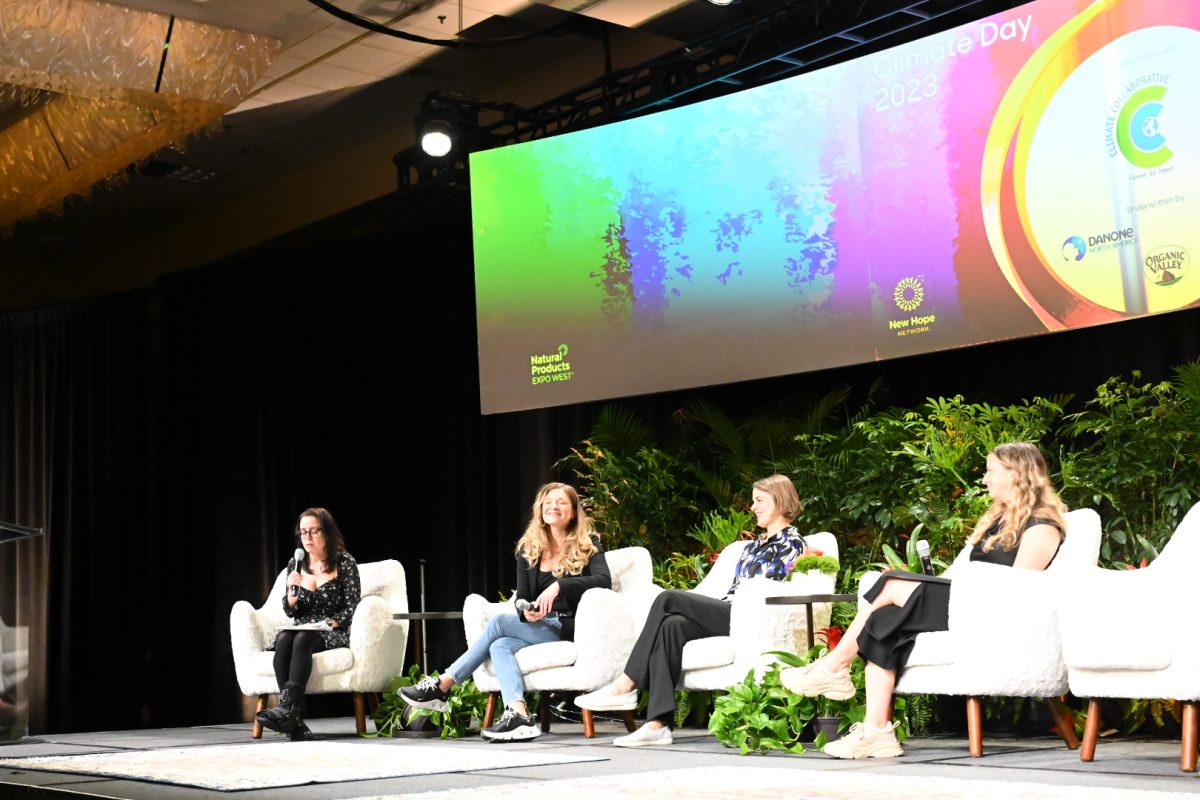
Danielle Nierenberg, Food Tank
Rachel Dreskin, Plant Based Foods Association
Ensuring that plant based food products can be labeled with clear terminology.
The positioning of plant-based food is strong.
Julie Kunen, Oatly
Climate education is being very transparent to our own footprint and putting it out in the world.
Go slow in order to go fast.
The collaborative way is the only way.
We must incentivize farms to take risks.
We have to build a supply that doesn’t exist.
Be patient and support brands trying to make this investment. It is not perfect.
Emma Stein, Miyoko’s Creamery
One of the most important thing for consumers to look at is the back of the label and understand it.
How can we redistribute the wealth in the food system to farmers on the ground?
C-Suite Sessions
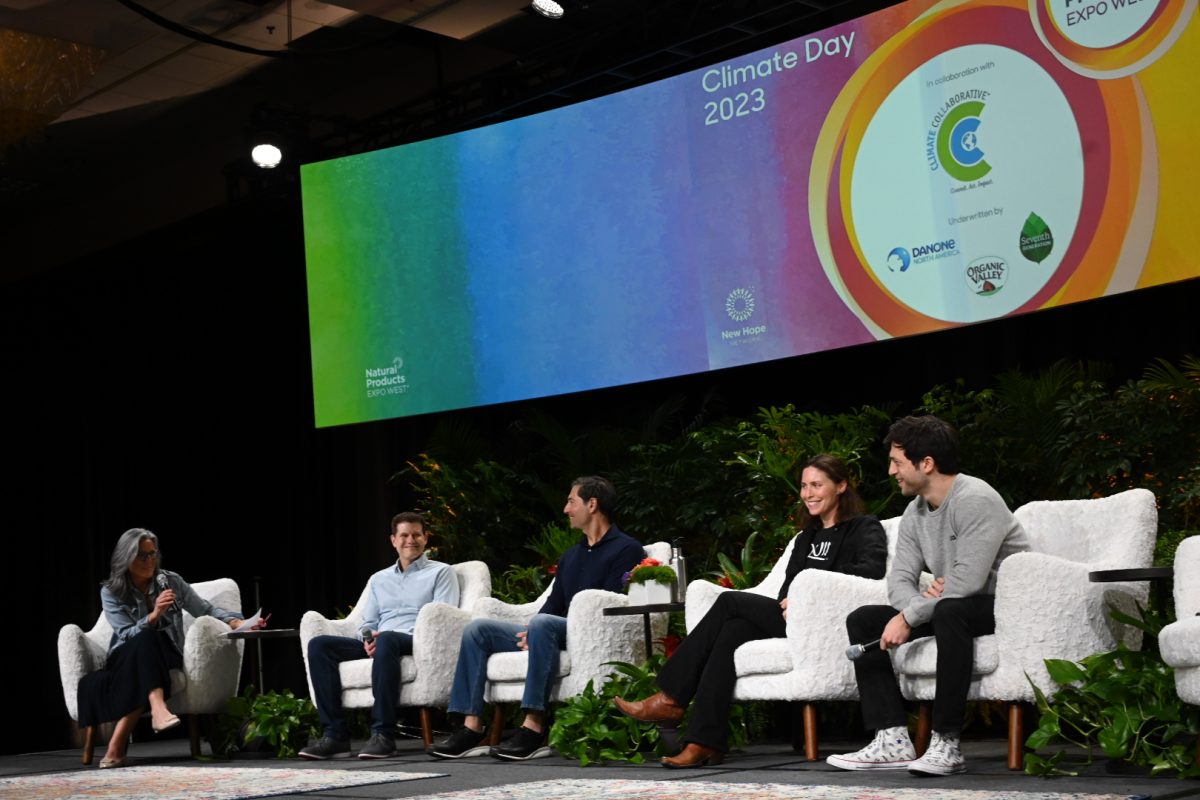
Regenerative Organic Certified
Regenerative Organic Certification (ROC) is a new certification program for food, fiber, and personal care products that takes a holistic approach to agriculture and manufacturing. The certification focuses on three main pillars: soil health, animal welfare, and social fairness.
ROC requires farmers to use regenerative practices that prioritize soil health and biodiversity, such as crop rotation, cover cropping, and reduced tillage. These practices promote healthy soil, which in turn leads to healthier plants, greater yields, and reduced water use.
In addition to soil health, ROC requires high standards of animal welfare, such as access to pasture and humane treatment. The certification also requires fair labor practices, including a living wage for workers and safe working conditions.
ROC aims to create a more sustainable and equitable food system by incentivizing regenerative agriculture and fair labor practices. The certification also aims to educate consumers about the importance of regenerative practices and the impact of their purchasing decisions on the environment and social justice.
Amy Kirtland, KeHE Distributors
Jason Buechel, Whole Foods Market
Responsible sourcing and climate friendly agriculture is at the heart of a lot of our offerings.
What are the bold goals we’re going to take as a company to nourish people on the planet and have a positive impact on the environment.
Make sure the environment has a seat at the table.
How to make sure customers understand what regenerative agriculture is?
Jordan Rubin, Ancient Nutrition
Building topsoil takes 500 years in nature to build one inch. Our goal is to build one inch per year. This is a 14 year project.
Minerals and microbes are missing to mankind, we want to bring to our diets as rebuilding topsoil.
Focus on education and activation to engage stakeholders.
You can count the number of seeds in an apple, but can you count the number of apples in a seed.
If we make it the thing to do, to make regenerative and sustainable products, then competitiveness will kick in.
Regenerative organic certified is a very high standard to obtain. Organic certified does not necessarily mean the product is doing anything to improve the environment.
Kristy Lewis, Quinn Snacks
Progress over perfection.
If you’re passionate about something, then lead with passion.
Its really important for small brands to collaborate with each other.
Any little thing is better, and it turn it will become something bigger.
Brian Rudolph, Banza
We think of our sustainability goals on an absolute basis and relative basis.
Absolute: What foods are most sustainable
Relative: Optimization and looking at things to do around the edges.
Build the importance of sustainability though activities, such as Lunch & Learn. They build up momentum in the interest of topics such as sustainability.
Whole Foods challenges us, and asks what we are doing for sustainability, and we love to answer those questions.
Just get started. Just do something.
- About the Author
- Latest Posts
I strive to paint vivid landscapes with my words, bringing the magic of far-off lands and enchanting aromas to life for my readers. Combine passion for exploration and the art of gastronomy in an unending ode to the senses. When I’m not traversing the globe, I find solace in the earth beneath my fingertips, tending to my garden and working on projects around my verdant oasis. MK Library serves as a beacon, guiding fellow travelers and homebodies alike to embrace sustainability, nurturing both our planet and our souls with purpose. Full Bio.

